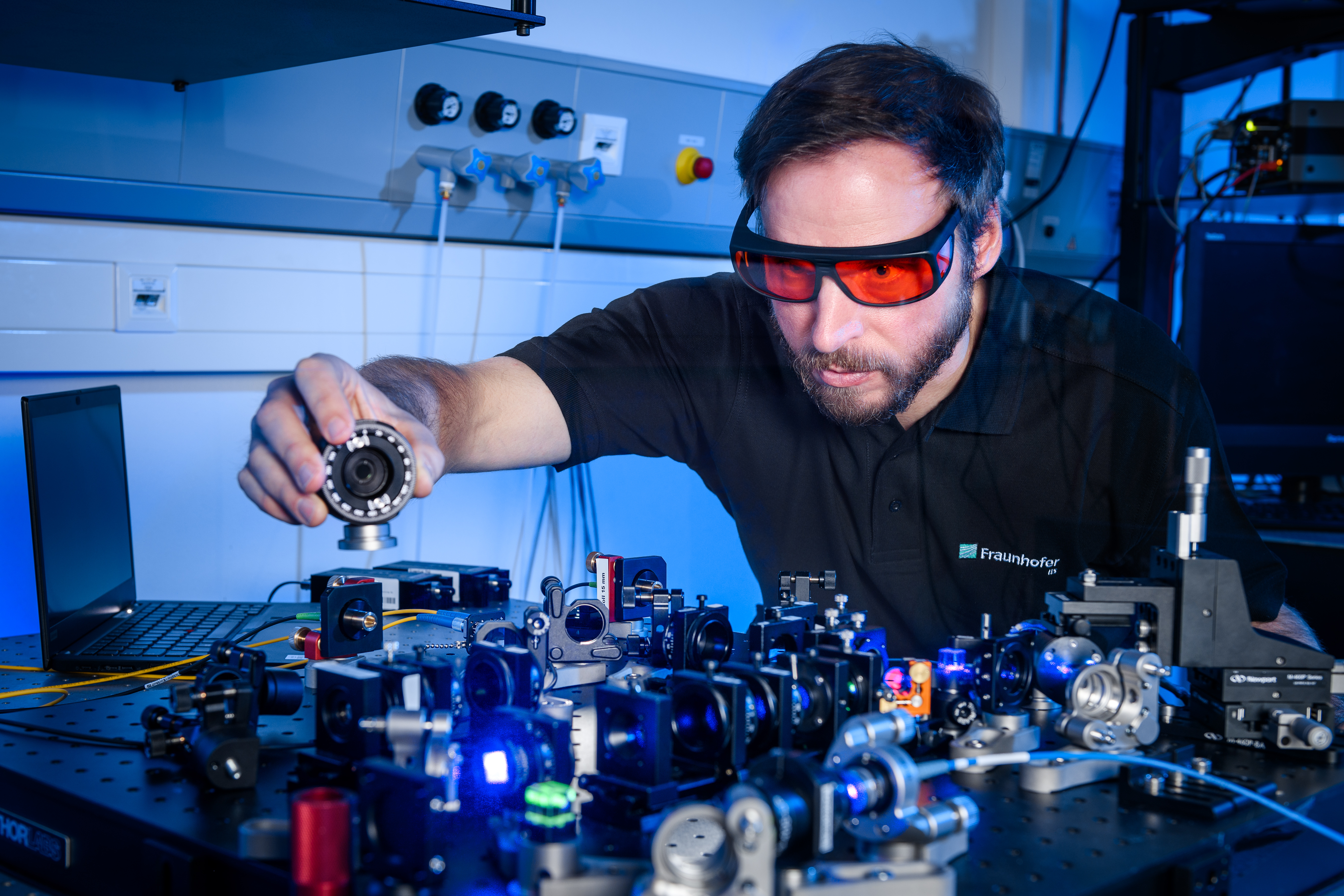Newsletter 01/2022
A new application center for the practical application of quantum communication has been launched at the Fraunhofer IIS/EAS location in Dresden. This technology is considered a pioneering way to ensure data transfer remains tap-proof in the event of future hacker attacks. Initial test setups have now been put into operation at the quantum communication center.

Fraunhofer IIS/EAS researchers have been establishing an application center for the “design of scalable electronic systems for quantum communication.” Since June 2022, the center has been providing companies and researchers with flexible experiment and test environments for the development of electronics for quantum communication systems, focusing on modular microelectronic circuits based, for example, on “chiplets.” On the one hand, this approach makes it possible to produce electronics cost-effectively even in small batches; on the other, it offers a way to realize high-performance functional units using the optimum technology for each of the heterogeneous systems required.
“Quantum communication – that is, the exchange of data via qubits – will change our world forever. The prospect of tap-proof data transfer offers just a glimpse of the full potential of this technology. However, it will take many more technological innovations for this technology to become widespread in industry, administration and, ultimately, the general public. This is where the new application center comes in: working within a partner network, it will develop and test precisely these applications in an effort to shape the central development stages of quantum technology,” says Saxony’s Minister of Science, Sebastian Gemkow.
The successful setup of a prototypical quantum communication system marks an important milestone for the application center. “To start with, we are now testing quantum-safe communication via fiber optics at our institute building on Münchner Straße,” reports Dr. Kay-Uwe Giering, who heads the Fraunhofer IIS/EAS Application Center. “Next, we are planning to gradually expand the distances for high-security signal transmission – starting from the local and urban environment in Saxony by 2024 and growing to encompass Thuringia and, over time, Bavaria as well.” The center, after all, is intended as a focus research infrastructure for the establishment of quantum communication under the umbrella of an initiative by the three states. The federal states’ activities in turn accompany the Germany-wide QuNET research initiative for the development of new key technologies for quantum communication, supported by the German Federal Ministry of Education and Research.
The application center’s establishment attracted some eight million euros in funding from the Saxon Ministry of Science, Culture and Tourism as part of the European Regional Development Fund (ERDF). This initiative is co-funded by taxation money from the budget passed by the state parliament of Saxony.
Background
Due to rapid advances in quantum computers, many of the cryptographic encryption methods used today – for example, in online banking – will become vulnerable to attacks in the future. This means that research into new methods for the secure transmission of data and information is crucial today. Encryption methods that can replace or usefully supplement today’s methods already exist. These are based on a system whereby the sender and the receiver each have a secret key known only to them. This is where quantum communication systems come in: they enable a secret exchange of keys by means of light quanta. Thanks to the laws of physics, it is impossible to intercept such quantum keys without anyone noticing. Quantum-encrypted data can, however, be transmitted via a conventional connection.

 Fraunhofer Institute for Integrated Circuits IIS, Division Engineering of Adaptive Systems
Fraunhofer Institute for Integrated Circuits IIS, Division Engineering of Adaptive Systems